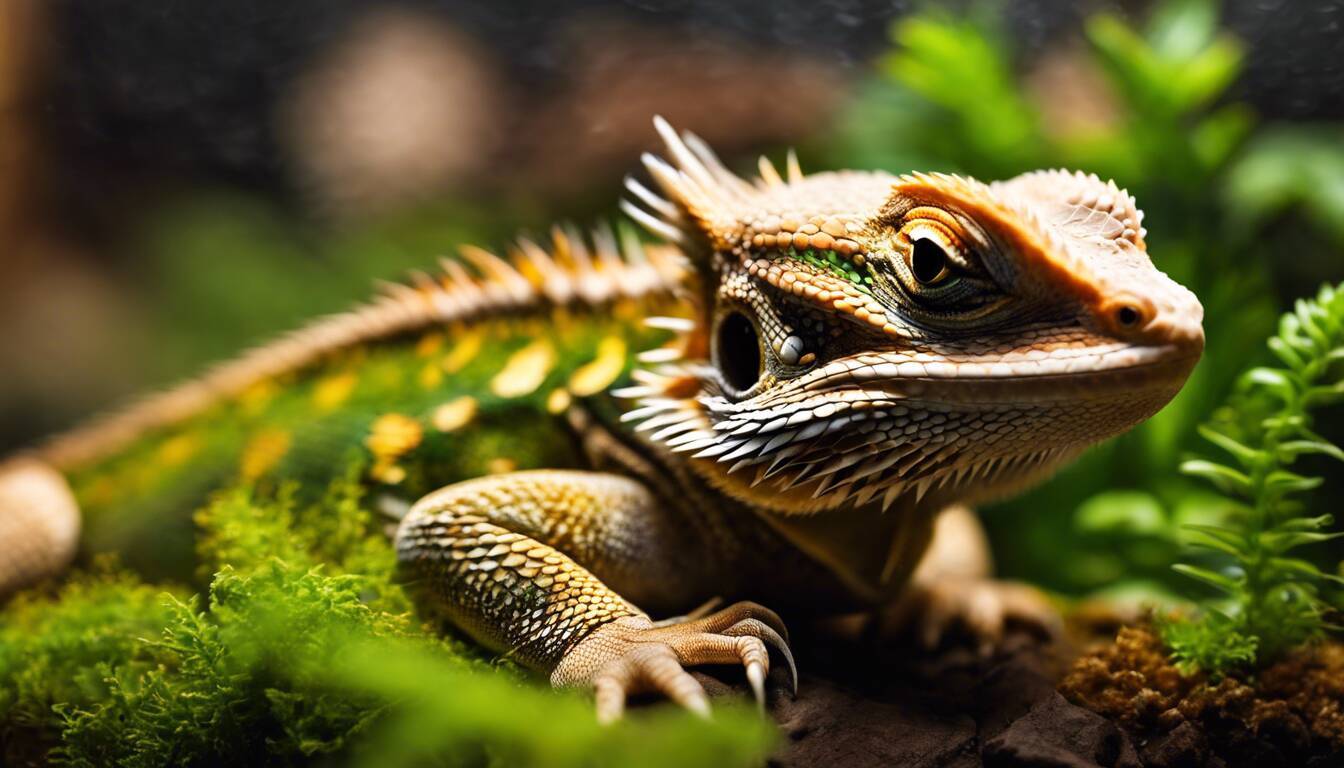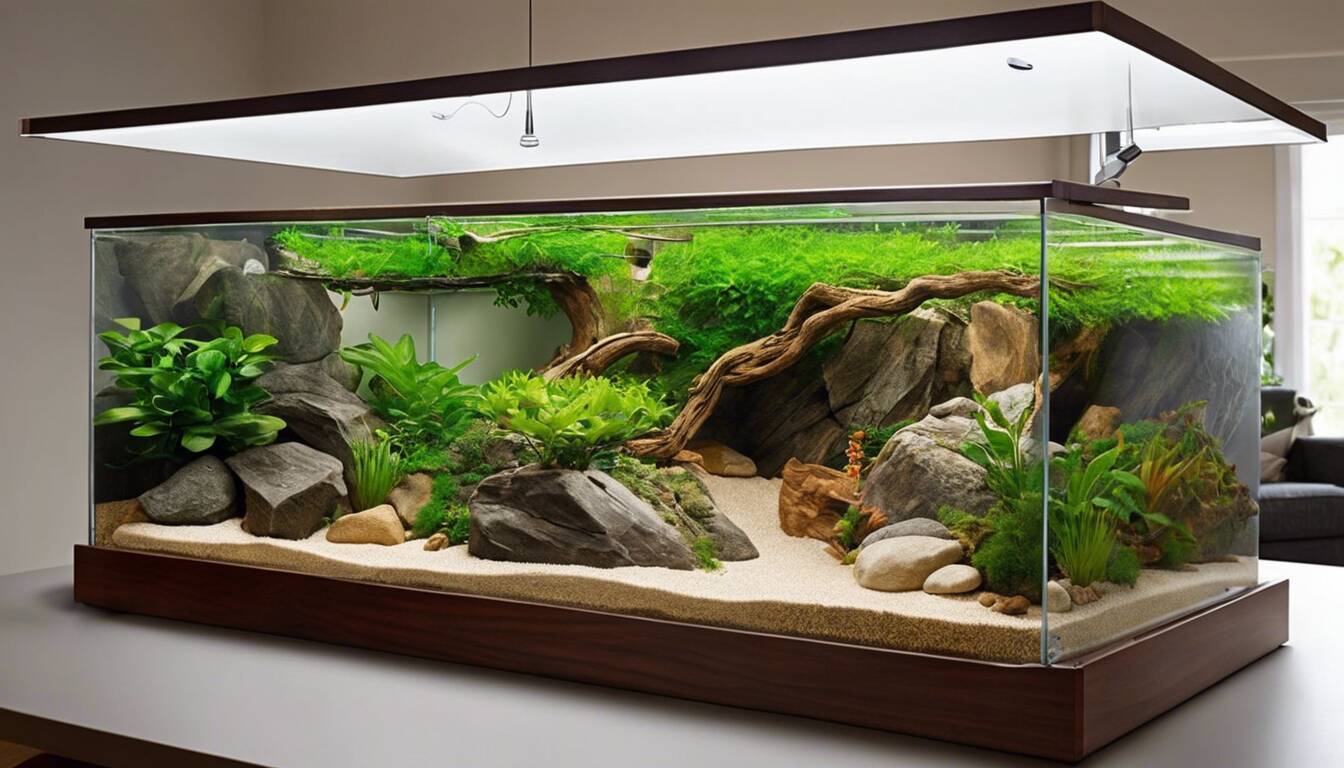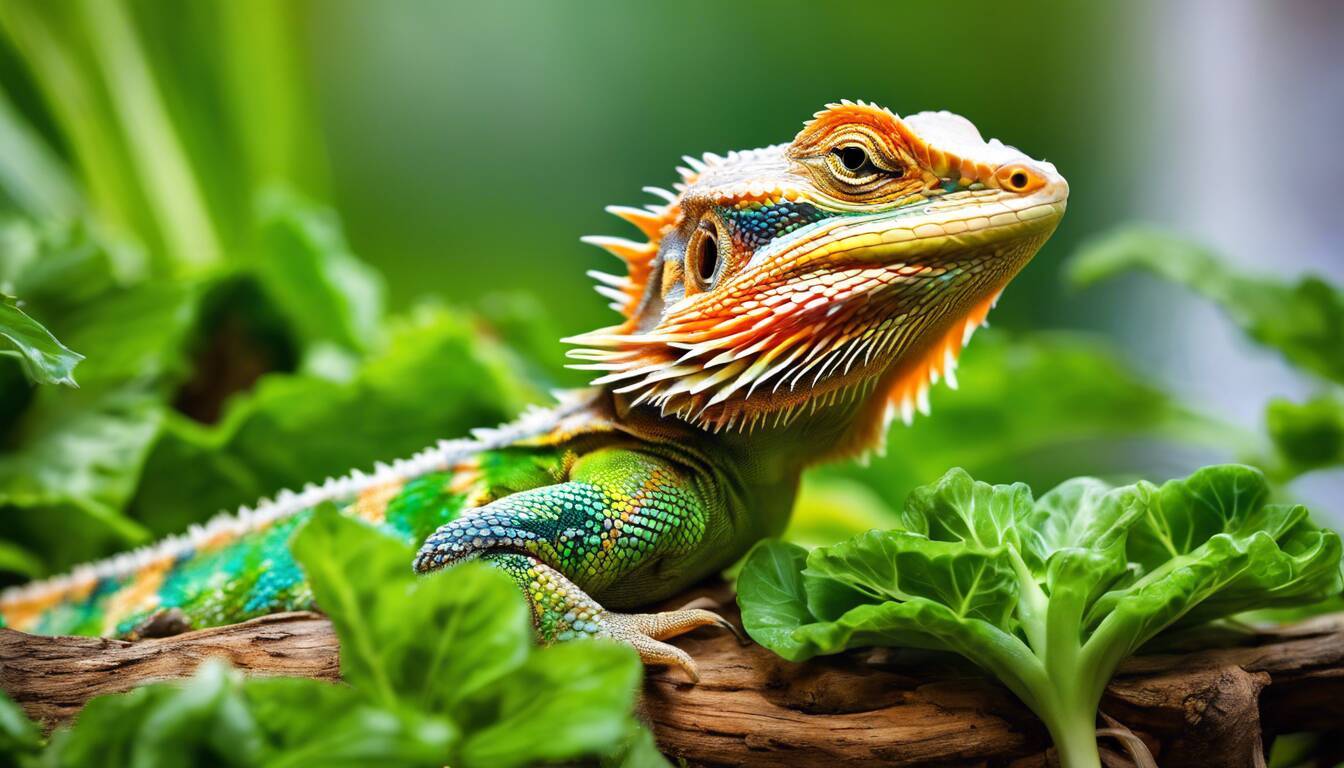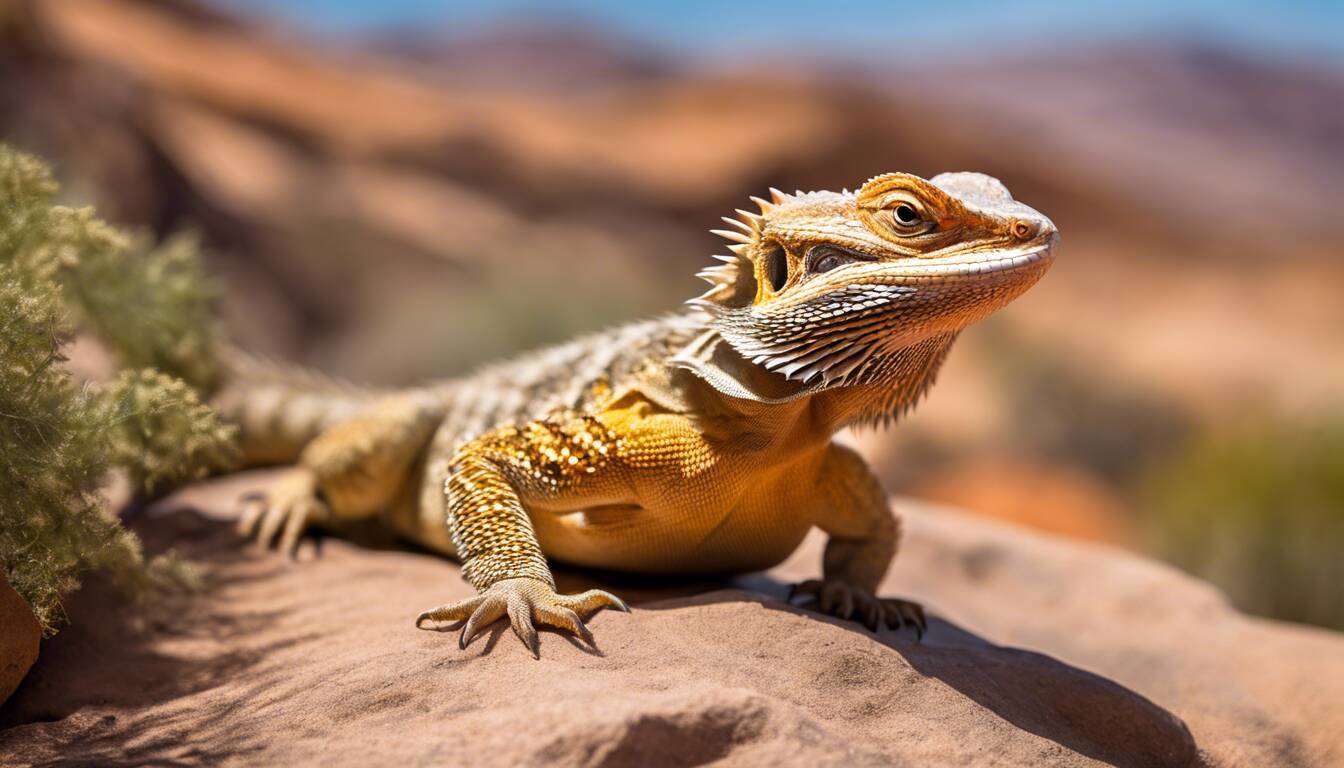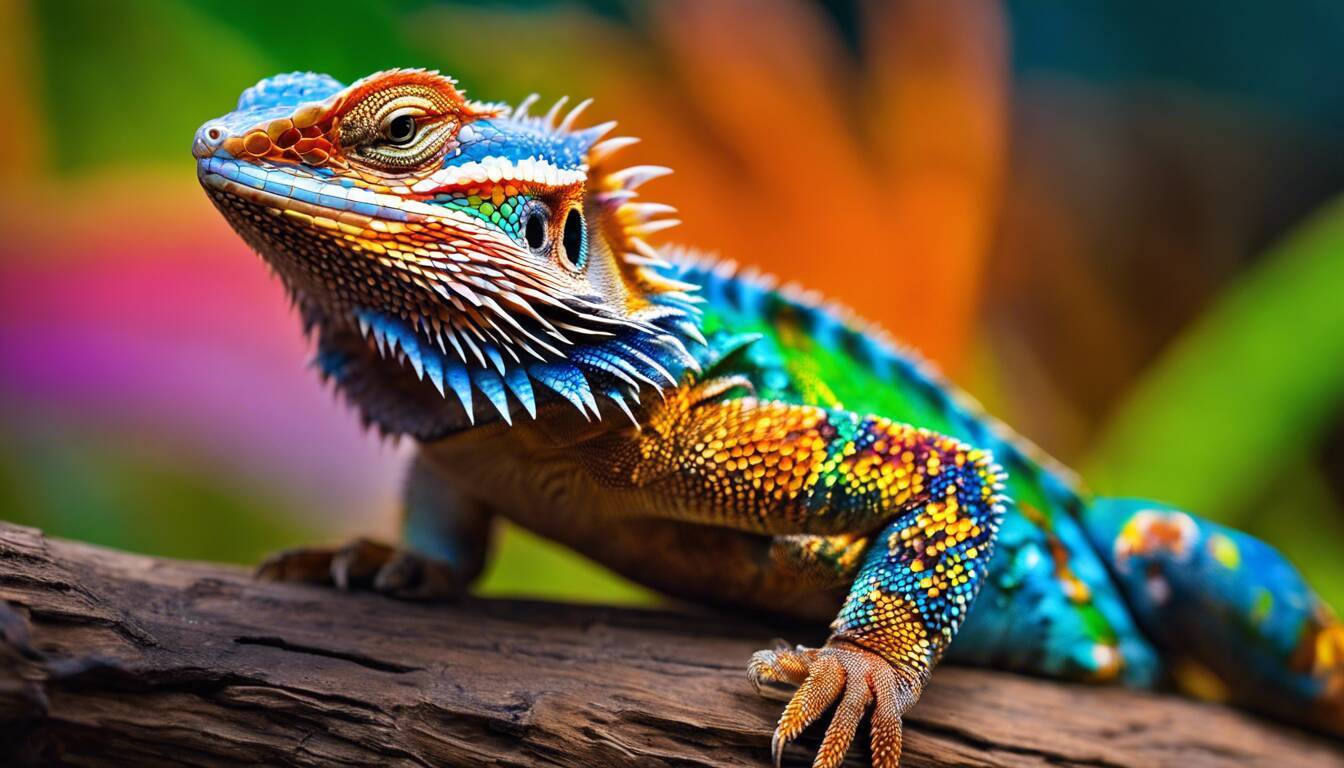Yes, bearded dragons are known as low maintenance pets. They are calm animals that are usually easy to handle, and their diet and home needs are simple. But remember, even though they’re easy-going reptiles, they still need specific care. Their diet, home, and health rely on proper understanding and action from their owner. So, don’t let the term “low-maintenance” fool you – proper bearded dragon care is still a commitment. Let’s dive into how to create their ideal living space.
Bearded dragons are generally considered low maintenance pets. With proper housing, heating, lighting, and a balanced diet of vegetables and insects, they can thrive with minimal fuss. However, it’s important to regularly clean their enclosure and provide enrichment to ensure their well-being.
Addressing the Ease of Bearded Dragon Care
When we think of low-maintenance pets, we might visualize a small fish in a bowl or an independent cat. However, bearded dragons have long been hailed as one of the most laid-back and rewarding reptiles to own. It’s not just a tired compliment; it’s a fact—bearded dragons, when properly cared for, can genuinely thrive with ease in a domestic environment. They are known for their docile nature and easy-going temperament, making them very approachable and adaptable to various living situations.
One factor that makes bearded dragons so low-maintenance is their hardy disposition – they are generally less susceptible to stress and disease when compared to other reptiles. Their dietary requirements are relatively straightforward, mainly consisting of a well-balanced mix of insects and vegetables. Additionally, their habitat needs are quite accommodating when set up correctly, which makes maintaining their living environment simpler.
For instance, they need a tank with proper heating and lighting, yet this is uncomplicated to set up. Once the habitat is arranged correctly, it’s mostly about ensuring a consistent routine of feeding and light cleaning. This simplicity is a significant boon for pet owners who value low-stress and accessible care routines.
However, it’s crucial for prospective bearded dragon owners to educate themselves about the specific needs of these reptiles before bringing one home. Ensuring proper diet, habitat maintenance, and handling is paramount to guarantee their well-being in captivity.
Understanding the true ease of caring for bearded dragons goes beyond the label of “low-maintenance” pets. Let’s now delve deeper into each aspect of their care to understand how they thrive in a domestic setting without excessive demands on their owners.
Choosing the Ideal Enclosure
When it comes to creating a comfortable and natural habitat for your bearded dragon, the right enclosure is essential. Firstly, let’s talk about enclosure size. Bearded dragons need room to move around and explore for their physical and mental well-being. For an adult beardie, a 40-gallon tank is recommended as a minimum size. Bigger tanks give your beardie more space to move around and explore, which can be very beneficial for both their physical health and mental stimulation.
Setting Up the Enclosure
Now that we have spoken on size – let’s now explore what goes inside the habitat: the setup.
When creating the perfect enclosure for your bearded dragon, you should focus on creating an environment that mimics their natural habitat. This means providing specific lighting, substrates, and hiding spots.
Lighting is fundamental for beardies due to their requirement for UVB light for at least 10-12 hours a day to support their health. Without proper UVB exposure, they may suffer from health issues related to calcium deficiencies. For substrates, many experts recommend using reptile carpet or paper towels in the tank which are easy to clean and reduce the risk of impaction from accidentally ingesting loose substrate material.
Hiding spots are essential too. They provide a sense of security for your pet, which is crucial in keeping them stress-free and healthy. Look for caves or shelters that will allow them to retreat when they want some alone time or feel threatened.
Imagine setting up a cozy bedroom with soft lighting, a comfortable bed, and places to hide when you’re feeling shy – now apply that feeling to your bearded dragon!
In ensuring an ideal habitat for your bearded dragon, the next step involves understanding the costs associated with acquiring and maintaining these wonderful creatures.
Cost: Buying and Maintaining a Bearded Dragon
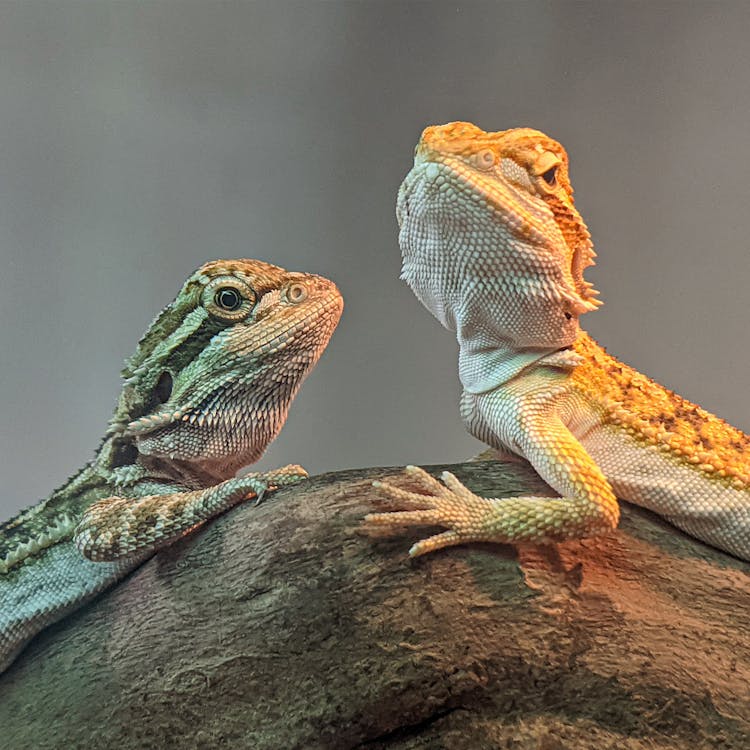
Adding a bearded dragon to your family means being responsible for this little creature’s well-being and happiness. Let’s delve into the initial purchase costs and ongoing maintenance expenses. First off, let’s talk about the initial purchase.
Initial Purchase Costs
When bringing home your new scaly friend, you’ll need to budget for the dragon itself, as well as everything that goes into setting up its new home. This includes the enclosure, lighting, heating elements, substrate, and other essential setup components. It’s easy to get tempted by extras but stick to the basics like a sturdy tank or terrarium, proper lighting fixtures and heating elements, and bedding material.
While it can be tempting to cut corners on some of these initial costs, it’s important not to skimp when it comes to providing a safe and comfortable habitat for your new pet. Cutting corners can lead to more expensive issues in the future.
Now let’s take a look at the ongoing maintenance expenses:
Ongoing Maintenance Expenses
After your initial setup, there are still going to be ongoing costs for taking care of your beardie. These include regular costs for food, substrate replacement, electricity for heating and lighting, as well as periodic vet check-ups. On average, annual maintenance costs can range from $300 to $600 depending on factors like diet, enclosure size, and health care needs.
It’s important to note that proper diet is crucial for the health of your pet. High-quality food and regular check-ups with a reptile veterinarian are essential ongoing expenses that directly contribute to your bearded dragon’s good health and overall satisfaction as a pet owner.
Some might initially think this is quite pricey compared to other small pets like fish or hamsters. However, remember that bearded dragons have longer lifespans than most small pets, so these annual costs actually compare quite favorably.
Also keep in mind that while these numbers can give us an idea of what to expect, actual cost differences can be significant based on factors such as geographic location and individual reptile care practices.
Caring for a bearded dragon involves some financial commitment indeed. Planning ahead for these expenses will set you up for stress-free beardie ownership and ensure that your scaly friend lives a happy and healthy life.
The financial responsibility of owning a bearded dragon is just one part of the equation when it comes to providing excellent care for these magnificent creatures. Now, let’s turn our attention to delve into their proper feeding routines and diet.
Proper Feeding Routines and Diet
Feeding your bearded dragon is about more than just giving them food; it’s about ensuring they get the right nutrients to be healthy and happy. A balanced staple diet is crucial for the overall health of your bearded dragon. This consists of leafy greens, a variety of vegetables, and live insects such as crickets, roaches, or mealworms.
Understanding what to feed them is crucial for their well-being. It’s like making sure you have all the right parts to fix something. If you leave something out, it might not work properly.
For leafy greens, options like collard greens, mustard greens, turnip greens, and dandelion greens are excellent choices due to their high nutritional content. Vegetables like squash, bell peppers, and carrots provide important vitamins and minerals. When it comes to live insects, it might seem a bit gross to us humans, but for bearded dragons, insects provide essential protein and other nutrients that help keep them healthy.
When figuring out portion sizes, think about what’s right for your beardie’s size and age. Baby dragons need different amounts of food compared to adults; imagine how much a toddler eats compared to an adult – they’re both hungry but need different amounts!
For instance, a juvenile bearded dragon might eat around 20 small crickets a day along with some leafy greens and water. On the other hand, an adult dragon might eat 50 crickets every other day alongside their salad.
It’s good to remember that larger bearded dragons need bigger portions and more insects than their younger counterparts. But even so, it’s important not to overfeed them since obesity in bearded dragons can lead to health issues.
Understanding portion sizes and nutritional needs is crucial for their overall health. Just like we humans need different things at different stages in our lives, bearded dragons do too! And getting these things right will help them stay healthy for as long as possible.
In considering the foundational aspects of caring for a bearded dragon, we now explore an indispensable element in ensuring their well-being: temperature and lighting regulations.
See Related: Badass Bearded Dragon Names: Unique and Cool Ideas for Your Pet
Crucial Elements: Temperature and Lighting
When it comes to ensuring the health and well-being of your adorable bearded dragon, creating the ideal environment with the right temperatures and adequate lighting is crucial. Just as we humans need different conditions for different activities, your scaly friend’s activity, digestion, and overall health are directly impacted by how warm or cool their habitat is. Let’s break down these essential elements so you can ensure your bearded dragon thrives.
Basking Temperatures
Proper temperature management in the enclosure is key to facilitating vital bodily functions in your bearded dragon. This includes maintaining a comfortable basking spot with temperatures ranging from 95-100°F. This warmth aids in digestion and metabolism, allowing your pet to adequately process and extract nutrients from its meals.
The concept of a temperature gradient within the enclosure is also important. Alongside the warm basking area, there should be cooler zones for your pet to retreat to. This mimic’s their natural behavior in the wild, where they can regulate their body temperature by moving between warmer and cooler spots.
To ensure a consistent heat gradient, consider using under-tank heating pads or ceramic heat emitters to maintain appropriate ambient temperatures. Monitoring devices such as digital thermometers can help you keep track of these temperatures.
UVB Lighting
In addition to temperature, UVB lighting plays a pivotal role in supporting the health of your bearded dragon. Exposure to UVB light enables these reptiles to properly metabolize calcium, which is essential for bone development and overall bodily functions.
To provide the necessary UVB lighting, it’s recommended to use specialized fluorescent bulbs designed to emit UVB rays within the 10-12% range. Positioning these light sources within the enclosure to ensure that your bearded dragon has access to UVB light for 10-12 hours each day is critical for their well-being.
It’s important to remember that UVB light cannot pass through glass or plastic, so if these materials are used in your pet’s habitat, it could inhibit the necessary exposure. Considering these factors when setting up the environment for your beloved pet will go a long way in ensuring they remain healthy and vibrant.
By creating an environment with suitable basking temperatures and providing access to crucial UVB lighting, you’re playing an integral role in promoting the health and vitality of your delightful bearded dragon.
Prioritizing Bearded Dragon Health and Safe Handling
Bearded dragons are more than just low-maintenance pets—they’re companions who deserve every bit of our attention when it comes to their well-being and safety. After all, we want them around for a long time, happy and healthy. So, let’s explore the ways to secure their health and how to handle these delightful creatures in a manner that ensures their comfort and trust in us.
Veterinary Care for Bearded Dragons: A Vital Necessity
Bearded dragons also need regular trips to the veterinarian, just like cats and dogs. However, not all vets are knowledgeable about reptiles, so finding one who specializes in them is essential. These visits help monitor your dragon’s health, tend to any medical concerns promptly, and most importantly, prevent potential diseases from escalating.
FACT: Bearded dragons can conceal illnesses very well. Regular check-ups can catch health issues early on when they’re more easily treatable.
During these visits, a reptile vet will assess your dragon’s overall health—checking their weight, examining their skin and scales, evaluating their eyes and mouth, and sometimes taking blood samples too. They may also provide advice on adjusting your pet’s diet or environmental conditions if necessary.
Proper Handling Techniques: Building Trust and Reducing Stress
Gentle and proper handling is vital when it comes to bearded dragons. Educating oneself on safe handling techniques is crucial for maintaining a healthy and trusting relationship with these pets. Whenever you pick up your beardie:
- Place one hand beneath their chest while letting their legs rest on your fingers.
- Support their body gently but securely.
- Avoid sudden movements, especially close to their face.
Safe handling practices involve supporting the bearded dragon’s body, avoiding sudden movements, and being mindful of their stress levels.
Think of it this way: Would you rather shake hands with someone gentle or someone who grabs yours too hard? It’s the same for our little scaly friends.
Understanding how to properly handle them plays an important role in preventing avoidable injuries. By showing them gentleness and care each time we interact with them, we build a strong bond based on trust. This will make both you and your beardie happier in the long run.
With these essential tips in mind, we’re well on our way to ensuring the health and happiness of our beloved bearded dragons.
Providing optimal care for bearded dragons involves a combination of attentive veterinary care and respectful handling. With the right knowledge and approach, these fascinating creatures can thrive as cherished companions in our homes.
